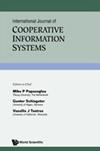基于概率线性判别分析的局部二值模式纹理特征人脸识别
IF 0.5
4区 计算机科学
Q4 COMPUTER SCIENCE, INFORMATION SYSTEMS
International Journal of Cooperative Information Systems
Pub Date : 2020-05-25
DOI:10.29040/IJCIS.V1I1.10
引用次数: 15
摘要
人脸识别是一种利用人脸特征进行处理的身份识别系统。人脸图像中有一个特征,可以区分一张脸和另一张脸。人脸图像识别的一种方法是分析人脸图像的纹理。纹理分析通常需要一个特征提取过程。在不同的图像中,其特征也会有所不同。这一特征将成为人脸图像识别的基础。然而,现有的人脸识别方法存在效率问题,并且严重依赖于正确特征的提取。本研究旨在利用局部二值模式(LBP)方法研究提取结果的纹理特征,该方法用于处理引入概率线性判别分析(PLDA)的问题。本研究使用的数据是来自AR Faces数据库的人脸图像,共136个对象(76名男性和60名女性),每个对象有7种类型的图像。基于测试结果,LBP方法在引入PLDA时的准确率最高,达到95.53%。关键词:纹理特征,局部二值模式(LBP),局部三元模式(LTP),概率线性判别分析(PLDA)本文章由计算机程序翻译,如有差异,请以英文原文为准。
Texture Characteristic of Local Binary Pattern on Face Recognition with Probabilistic Linear Discriminant Analysis
Face recognition is an identification system that uses the characteristics of a person's face for processing. There is a feature in the face image so that it can be distinguished between one face and another face. One way to recognize face images is to analyze the texture of the face image. Texture analysis generally requires a feature extraction process. In different images, the characteristics will also differ. This characteristic will be the basis for the recognition of facial images. However, existing face recognition methods experience efficiency problems and rely heavily on the extraction of the right features. This study aims to study the texture characteristics of the extraction results using the Local Binary Pattern (LBP) method which is applied to deal with the introduction of Probabilistic Linear Discriminant Analysis (PLDA). The data used in this study are human face images from the AR Faces database, consisting of 136 objects (76 men and 60 women), each of which has 7 types of images Based on the results of testing shows the LBP method can produce the highest accuracy with a value of 95.53% in the introduction of PLDA. Keywords—Texture characteristic, Local Binary Pattern (LBP), Local Ternary Pattern (LTP), Probabilistic Linear Discriminant Analysis (PLDA)
求助全文
通过发布文献求助,成功后即可免费获取论文全文。
去求助
来源期刊

International Journal of Cooperative Information Systems
工程技术-计算机:信息系统
CiteScore
2.30
自引率
0.00%
发文量
8
审稿时长
>12 weeks
期刊介绍:
The paradigm for the next generation of information systems (ISs) will involve large numbers of ISs distributed over large, complex computer/communication networks. Such ISs will manage or have access to large amounts of information and computing services and will interoperate as required. These support individual or collaborative human work. Communication among component systems will be done using protocols that range from conventional ones to those based on distributed AI. We call such next generation ISs Cooperative Information Systems (CIS).
The International Journal of Cooperative Information Systems (IJCIS) addresses the intricacies of cooperative work in the framework of distributed interoperable information systems. It provides a forum for the presentation and dissemination of research covering all aspects of CIS design, requirements, functionality, implementation, deployment, and evolution.
 求助内容:
求助内容: 应助结果提醒方式:
应助结果提醒方式:


